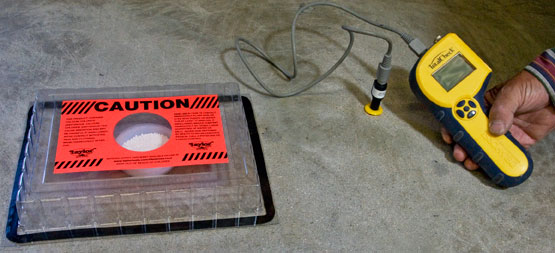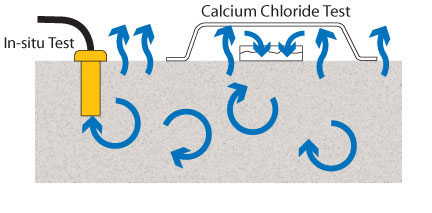
|
||
 |
||
In-Situ tests measure the relative humidity of the slab to assess the moisture contained in the concrete that can potentially be emitted at the surface. Calcium Chloride tests, on the other hand, measure the moisture vapor actually being emitted. The importance of conducting both tests is simple: While an in-situ test may provide an acceptable reading of relative humidity at 40% of the slab depth, there may be excessive emissions actually emanating from the surface. In contrast, there may be virtually no emissions while the slab may in fact contain a large amount of moisture that would be emitted once the vapor pressure conditions above the slab change.
|
Installers and technicians who currently combine both the in-situ and calcium chloride tests will benefit from these proposed refinements to give both the installer and the customer a reduced risk of floor failure. Through our worldwide distributor network, Taylor Tools provides both types of moisture testing products - Calcium Chloride test kits and In-Situ Moisture Meters. |
|
|
||

